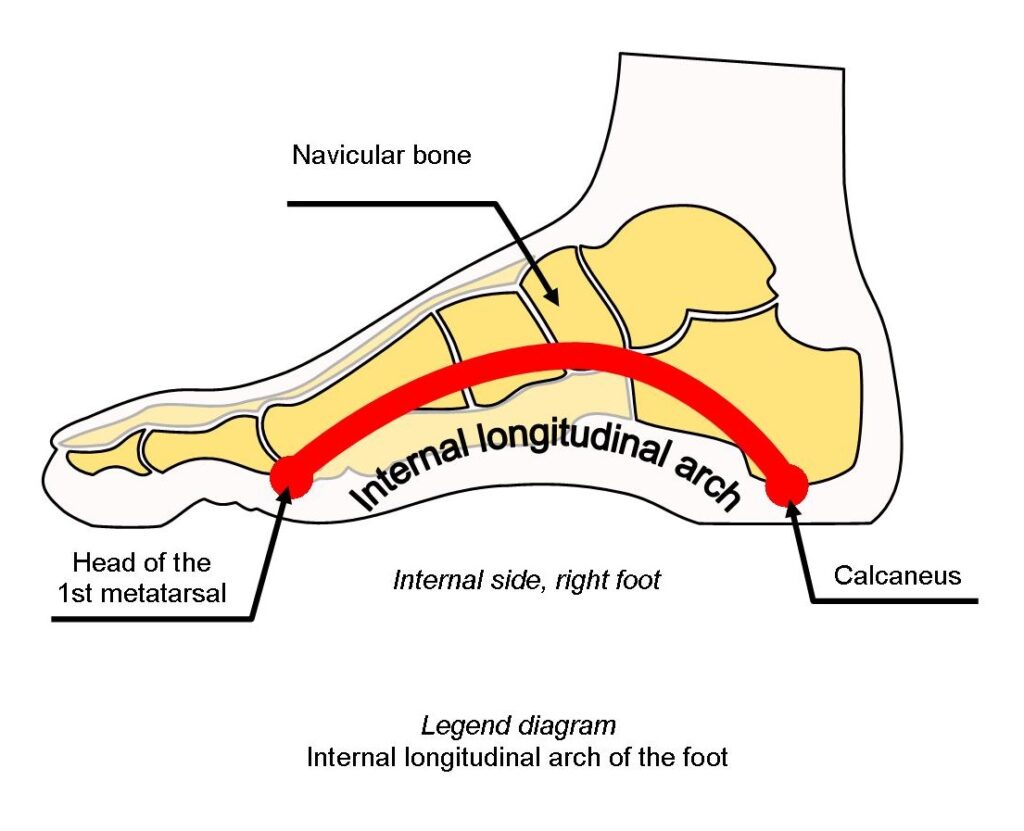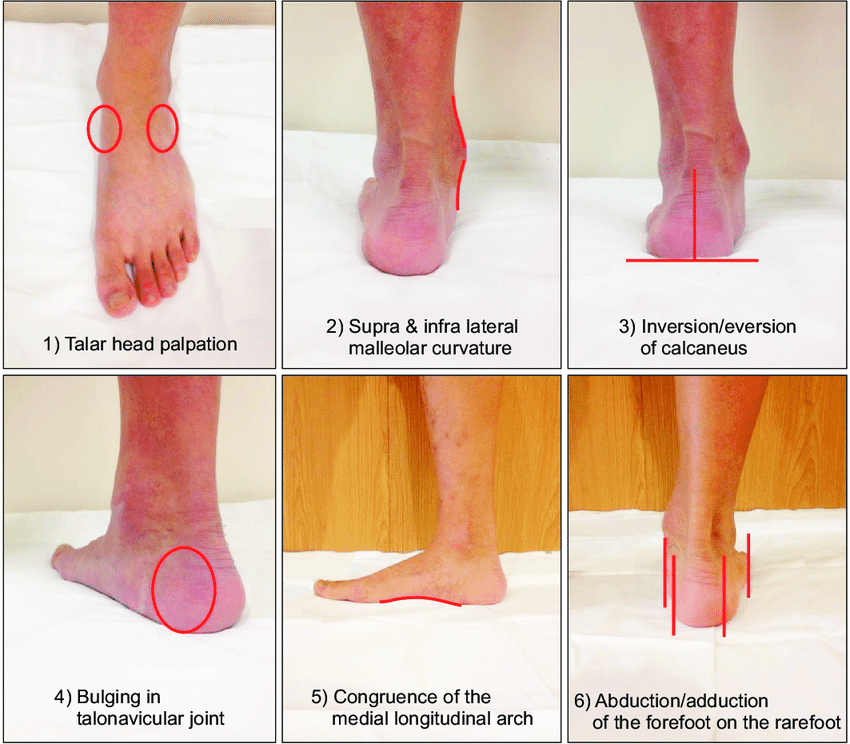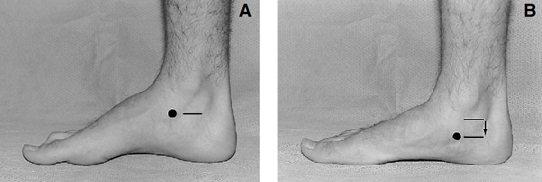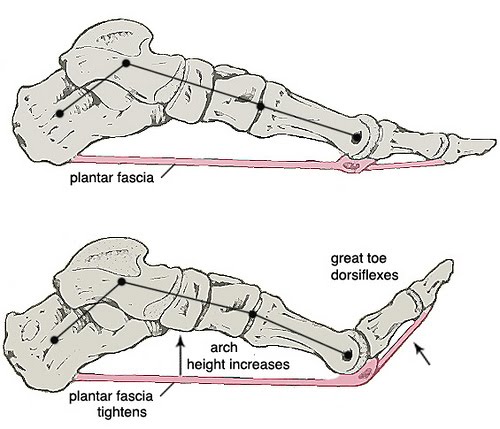Research Reviewed: Effects of plantar intrinsic foot muscle strengthening exercise on static and dynamic foot kinematics: Randomized controlled single-blind trial in individuals with pes planus. Okamura et al. Gait & Posture. 2019
Pes planus foot alignment (“flat feet”) is when the foot goes flat due to a decrease in the medial longitudinal arch (MLA).

The research on whether it actually increases injury risk is quite mixed but it may have some increase in injury risk, particularly for shin splints (medial tibial stress syndrome, MTSS) and plantar fasciitis.
The muscles on the bottom of the foot – known as the plantar intrinsic muscles – help support the MLA. One of these exercises is called the “short-foot”, a commonly prescribed exercise to help with pes planus. However, the research on its effectiveness has been mixed and study design wasn’t the best.
Therefore, the researchers in this paper wanted to rectify that and did so using a randomized controlled trial (RCT), splitting participants into a control group (no exercise) and the intervention group (8-weeks of progressive short foot training using EMG to tell the participant that the muscle was being activated) without either group knowing who was who.
Enjoying the post? Sign-up for instant inbox access
Just enter your email below to get the latest blog updates delivered straight to your inbox. Every post is researched and written by Dr. Rajpal Brar, DPT.
By submitting this form, you are consenting to receive marketing emails from: . You can revoke your consent to receive emails at any time by using the SafeUnsubscribe® link, found at the bottom of every email. Emails are serviced by Constant Contact
They looked at the effects of the short-foot exercise on both static and dynamic (walkking) foot kinematics (movement mechanics).
For static testing, the researchers looked at something called “foot posture index” FPI which is a 6-item test consisting of the following:

And navicular drop test which is the difference between the minimal and maximal height of the navicular bone when the foot is arched vs not arched:

The researchers found significant differences in the intervention group for each of the measures.
For dynamic changes during gait (walking), the main finding was a shortened interval during which the height of the navicular bone reached its lowest value. This indicates that the “windlass mechanism” (see pic below) – a critical part of foot function and stability – may have been strengthened with the short-foot exercise.

The other finding was a decrease in medial (inner) ground reaction force during walking. This may indicate increased efficiency of force transmission between the foot and ground due to the short-foot exercise.
All that being said, take these results with a grain of salt because the sample size of this paper was only N=20. Even though the dynamic change in navicular height was very significant, this is still a small sample size to make any sort of concrete conclusion on.
From a practical standpoint, the short-foot exercise is potentially a low risk – medium reward part of training. It may have significant physical benefits and I’ve also found that it simply helps people wrap their head around and get into the habit of training the muscles of the foot.
If you want to work with us, then please fill out the contact form below. If you appreciate the work and want to support, head over to our Patreon. Thank you for reading and thank you for your time.
Dr. Rajpal Brar, DPT, (@3cbperformance) is a physiotherapist, movement expert, strength and conditioning/fitness coach, sports scientist and mindfulness coach. He runs the LA and online based physiotherapy and athletic performance clinic 3CB Performance and you can subscribe to his Youtube channel (which posts a variety of sports injury, performance, and fitness related content).